 |
 |
 |
 |
 |
 |
 |
 |
 |
 |
 |
 |
 |
 |
 |
 |
 |
 |
 |
 |
 |
 |
 |
 |
 |
 |
 |
 |
 |
 |
 |
 |
 |
 |
 |
 |
 |
 |
 |
 |
 |
 |
 |
 |
 |
 |
|
|
Tuneup Hints |
|
|
|
10 Degree Plug created Dec 8, 2004 |
|
|
|
PCM Connector created April 6, 2006 |
|
|
|
The "10 Degree Plug" |
|
|
|
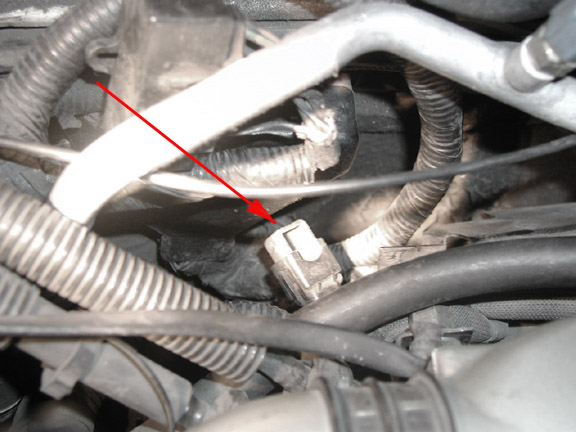 |
|
|
|
The arrow points to the plug. To find it easier, scroll down for additional pictures. |
|
|
|
What I call the "10 Degree Plug" is a test plug that, when unplugged, causes the engine to run at a constant 10 degrees BTDC. This plug is located near the cam sensor, in the general vicinity of the connector for the PCM, over by the right front corner of the engine, between it and the firewall. When pulled out, the engine power at speed is terrible, and the car is barely driveable, but the engine will pass a smog check where it otherwise would not pass the NOx portion of the test. NOx is caused by too hot a combustion temperature, which can occur if timing is too far advanced and other preventative measures are not controlling the output of NOx, such as EGR or 3-way catalytic converters. Pulling this plug will get a non compliant car past the smog check, so it can be legally driven while the real problem is solved.
In one case, a brand new installed SHOShop Y-pipe....the multi piece equal length version, will not light off the cats....it is as if they are not there. We haven't figured why they won't light off, but without them functioning, the NOx reading on this car is about half again what California will allow. With the plug pulled, the car passed easily. |
|
|
|
There is another plug, up behind the left headlight, that apparently retards timing by 5 degrees or so. It looks the same as the 10 degree plug, but does not make a lot of difference in how the engine runs. The EVTM calls this plug (I think) the Shorting Plug #2. I'm supposing the 10 degree plug in the back is the Shorting Plug #1, but it is not mentioned in the EVTM. When I find my '90 wiring diagrams, or get a set of '91 diagrams, I may find them labled differently. I will correct the information here when I find out what the proper names of the plugs are. |
|
|
|
If you don't recognize the location of the plug in the above picture, look at the two below. The first one is a wide angle shot of the engine, with the second picture below outlined in red. The second picture has the above closeup shot outlined in red. |
|
|
|
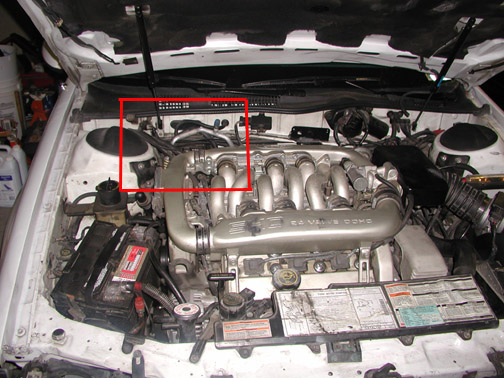 |
|
|
|
Yeah, it's dirty, but it has 283,000 miles on it!! |
|
|
|
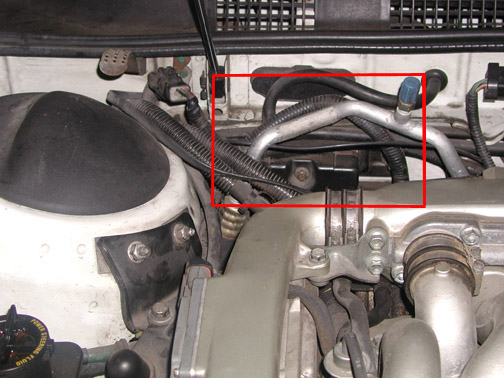 |
|
|
|
The single rusted looking (it really isn't!) bolt in the square above is the PCM plug (60-pin plug) retainer bolt. |
|
|
|
PCM Power and Ground Connectors in Gen 1 SHOs |
|
|
|
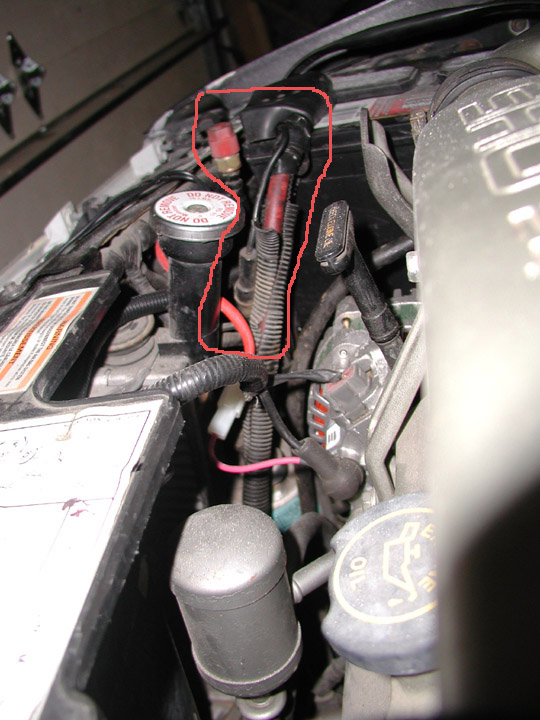 |
|
|
|
If when you turn the key on, you are not getting a fuel pump hum, and the Check Engine light is dim, chances are you are not getting power to the PCM and IRCM. Power to these components goes directly from the battery through a separate circuit from the positive battery cable. A smaller wire is connected to the positive terminal at the battery, and goes to a connector a few inches below it. This connector is sometimes disconnected inadvertently by pulling the positive battery cable around while doing engine work, or replacing the battery. Even the most experienced SHO mechanics can accidently unplug this connector and not realize it, until the car won't start, and the dim CE light and lack of fuel pump activity shout out the fact that the PCM is dead. The wide angle photo below shows where the PCM plug is on my '90 SHO, Black Diamond. |
|
|
|
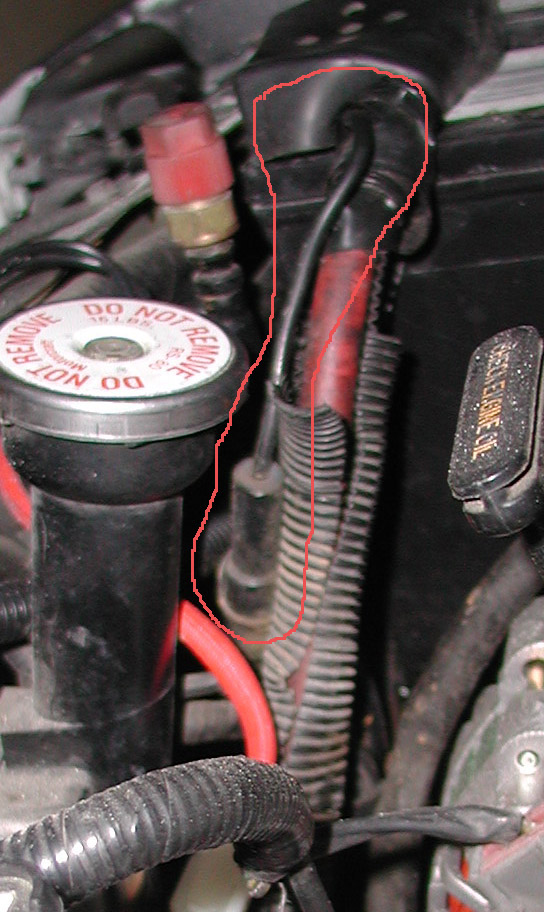 |
|
|
|
Notice the plug itself, about 6 inches down from the cable connector. It is hard to see in the dark, buried as it is near the A/C pressure switch and associated plumbing. |
|
|
|
|
|
The plug does not have any specific orientation...it just snaps straight into the female half. If it tends to not want to stay connected, use a zip tie to hold the lower portion of the wiring harness up a bit, taking the stress off the connecter itself. |
|
|
|
|
|
PCM Ground Connector |
|
|
|
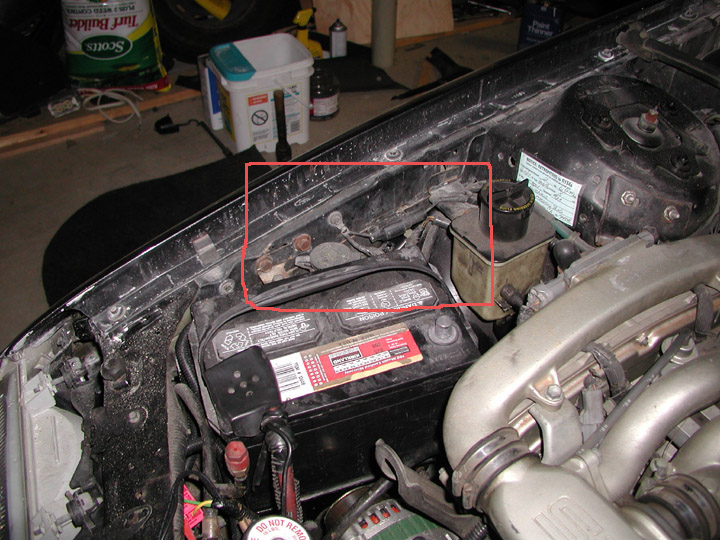 |
|
|
|
The PCM Ground connector is over on the right front fender, just in front of the power steering reservoir. Sometimes this conenctor to the fender can be rusty, and cause an intermittent ground. Or, as in the case of my adventures with the 'Plus from Hell', the positive wire can be haphazardly connected to the positive battery terminal itself, and the power can be intermittent. The previous owner had replaced the positive terminal with a cheapo clip on version, which had cracked, and allowed the wire to be laying loose on top of the end of the positive cable, and though it looked like a good connection, it was actually open much of the time...about the same amount of time the car was dead on the side of the road! |
|
|
|
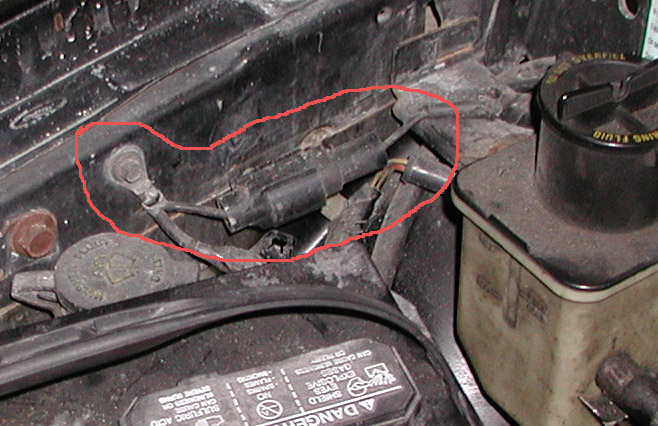 |
|
|
|
Here's a close-up of the ground connector. Make sure it is secure, and not rusty inside. Most likely, it hasn't been fooled with since the car was new. The likely culprit is the positive connector, but might as well check them both. Good luck!!! |
|






